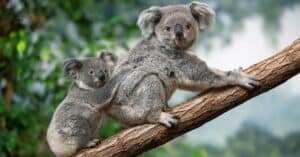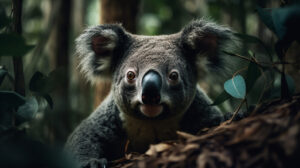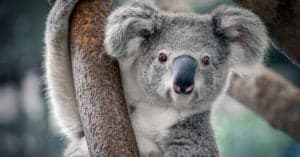Koalas are among the cutest animals you’ll ever come across. It’s no wonder people call them koala bears even though they’re marsupials. They are also very picky eaters, surviving only on eucalyptus leaves. This limited diet reflects on their sleeping habits because they have to conserve energy due to insufficient nutrients in those leaves.
Their limited diet is also the major factor behind all the mysteries surrounding their poop. In this post, we will uncover everything you’ve ever wanted to know about koala poop.
What Does Koala Poop Look Like?
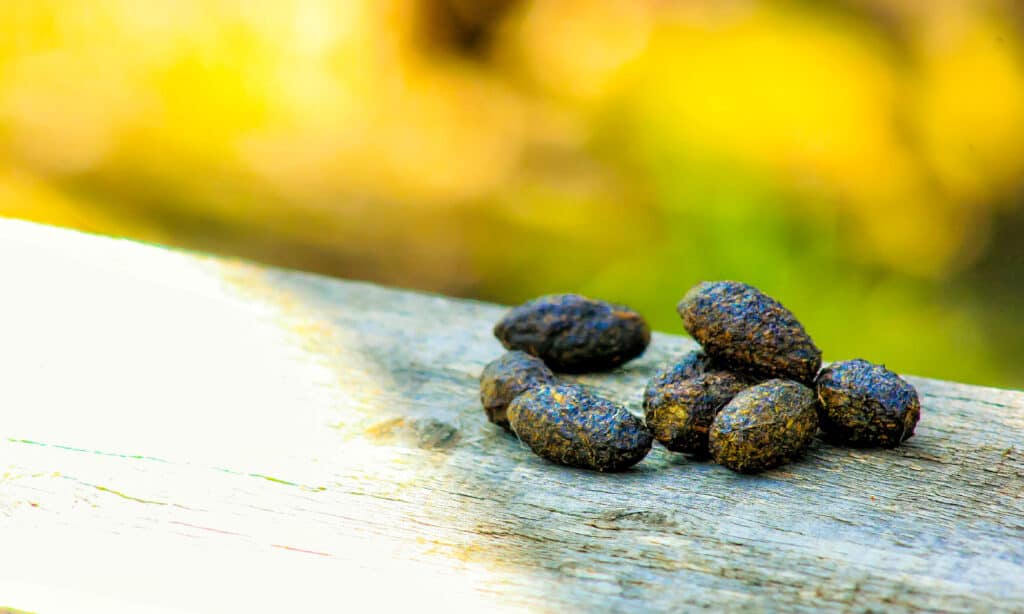
Koala poop is oval-shaped, just like an olive.
©Phassa K/Shutterstock.com
Mostly darkish-green, koala poop is oval-shaped, just like an olive. The poop is hard on the outside and can also have the same colors as some olives. Koala poop is also one of the least offensive smelling poops because they’re arboreal herbivores. They spend much of their lives in eucalyptus trees and eating their leaves. This choice to stick with a limited diet reflects in the color of their poop, as it is often green.
In many cases, koala poop has been mistaken for the poop of wombats and other herbivores. But unlike these animals, koala poop doesn’t contain any hair. For example, wallabies tend to swallow some hair while grooming, and that’s why you find some hair in their diet. But koalas rarely and seldom have hair in their poop, making it the major distinguishing factor between their poop and that of other herbivores.
How Often Do Koalas Poop?
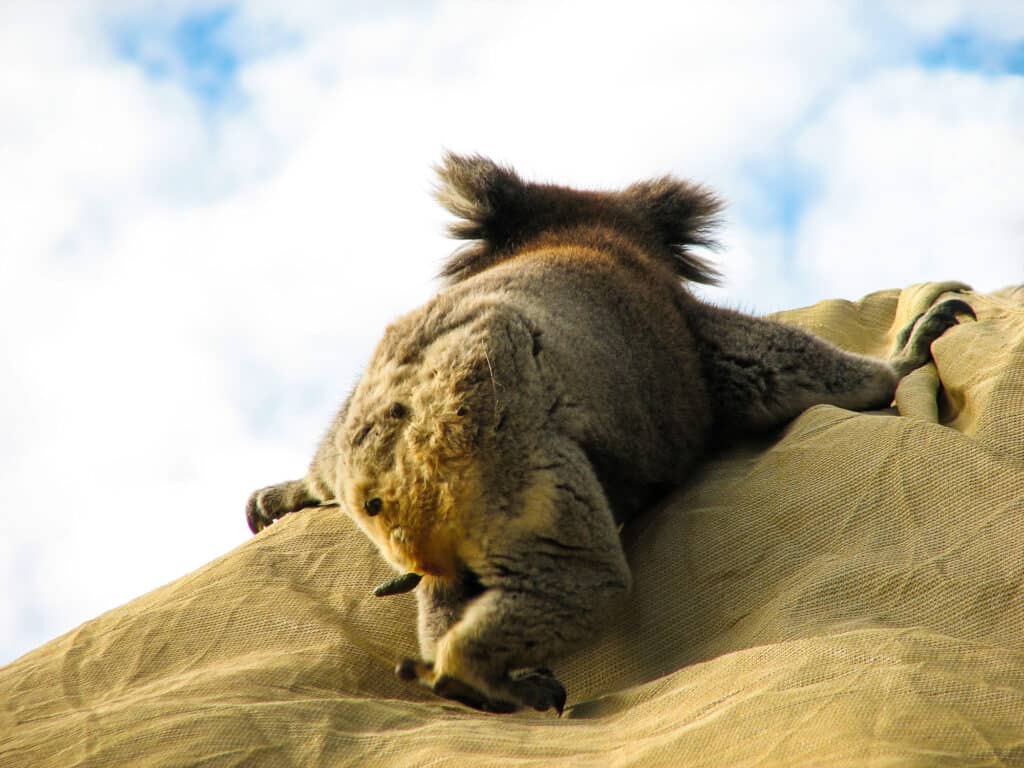
Due to how much they eat in a day, koalas can poop up to 200 times daily.
©iStock.com/ozflash
Koalas can poop up to 200 times every day. This is no surprise as their diet requires a lot of time and process to digest. They also produce little pellets round the clock, even when sleeping. They produce many of these little pellets and could produce up to 360 in a day. This is a result of how much they eat in a day.
Generally, koalas eat between five to six times daily. This is important for them to survive due to the low nutritional content of their diet. Frequent eating allows them to consume an average of 1- 1.15 pounds of leaves daily. Furthermore, koalas feed for three hours daily and sleep for about eighteen to twenty-two hours. They spend so much time sleeping because they need ample time to digest their food. Without this, they wouldn’t be able to poop as frequently as they do because their bodies require a lot of energy to digest eucalyptus leaves.
Eucalyptus leaves are poisonous leaves that prevent many herbivores from feeding on them. However, koalas have a strong liver, allowing them to ingest those toxic leaves. They also eat soil, bark, and gravel sometimes to help with the digestive process. Notwithstanding, koalas are picky about what they eat; they eat only 30 out of 600 eucalyptus species. Therefore, koalas will most likely discard leaves they sense are too poisonous for their system to take.
Do Koalas Eat Their Poop?
Adult koalas don’t eat their poop. However, baby koalas (joeys) eat their mother’s poop because they can’t digest eucalyptus leaves. This poop is a creamy and extra wet kind known as “pap.” Despite how disgusting this sounds, this feeding system is key to a joey’s survival. Pap contains special bacteria and proteins that baby koalas need to improve their liver. Feeding on this helps develop gut bacteria in their system, which is required to begin feeding on their specialized diet: eucalyptus leaves. Therefore, pap is a probiotic substance needed to introduce baby koalas to their normal feeding system.
Importance of Koala Poop
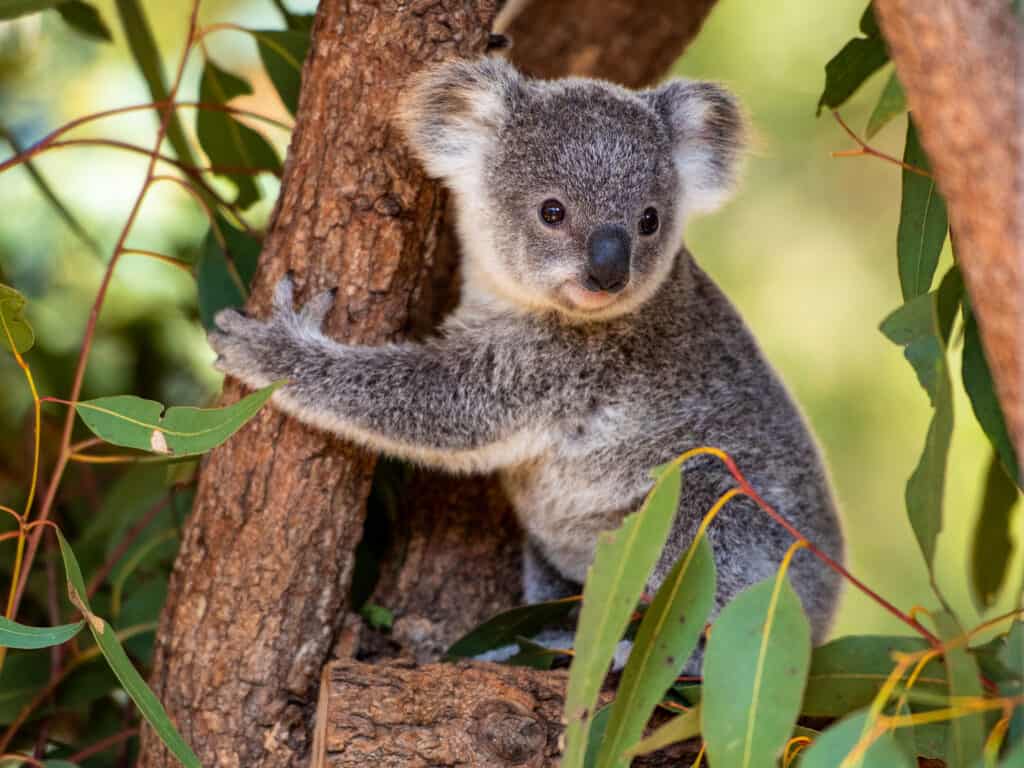
Joeys need koala poop to survive.
©iStock.com/eeqmcc
Most animal poops don’t serve any significant purpose. However, koala poop is an entirely different ball game. Their poop is a major tool used in preventing them from going extinct. In other words, the key to saving koalas is their poop. How?
First, joeys need koala poop to survive. Like other mammals, they feed on their mother’s milk in the first few months because they can’t digest eucalyptus leaves. However, their mother’s milk can’t sustain them for long, so they feed on their mother’s poop which helps to improve their digestive system.
Koala poop also plays a significant role in the ecosystem by helping with waste degradation. For as long as we can remember, we’ve been finding new ways to keep the environment healthy. One such approach is the reduction of plastic bags in our landfills. Nature also produces enzymes that aid waste degradation, but it’s usually a hassle trying to find the organisms that make them. Fortunately, scientists discovered koala poop. It comprises highly lignified fiber and undigested cellulose due to its diet. These properties produce fungi and diverse enzymes capable of breaking down recalcitrant substrates.
Up Next:
Badger Poop: Everything You’ve Ever Wanted to Know
Armadillo Poop: Everything You’ve Ever Wanted to Know
Bobcat Poop: Everything You’ve Ever Wanted to Know
The photo featured at the top of this post is © Alizada Studios/Shutterstock.com
Thank you for reading! Have some feedback for us? Contact the AZ Animals editorial team.



